Offline Outbound
What does a Doormat, Labubu and Vanilla cake have in common?
Growth and GTM teams have been taking on a new form of outbound. It doesn’t involve email, nor AI… as a matter of a fact - it’s not even digital at all.
For as long as software has been sold, outbound has been the engine behind B2B growth. Before brand building tactics on social media, growth intern LinkedIn shitposting, and all the “-EO’s” (SEO, GEO, AEO… why are there so many?) - companies relied on the good ‘ol cold email and cold call. Even before that, the earliest form of selling services came from the Liu Family Needle Shop who printed
“We buy high quality steel rods and make fine quality needles, to be ready for use at home in no time”
on copper printing plates in China in 900 AD.
You’d think that in a world where AI is advancing online productivity in almost every aspect possible, Growth and GTM teams would be heavily leaning into these tools to improve their outbound. However, it seems like almost the opposite is happening.
The sharpest GTM teams are doing something that seems backward: going offline.
This phenomenon - “Offline Outbound.”
Definition: Offline Outbound | Pronunciation: ˈôf-ˌlīn ˈout-ˌbau̇nd | Noun
A modern form of Account-Based Marketing (ABM) in which a company builds a campaign around a physical, co-branded object or in-person gesture to initiate authentic, relationship-driven outreach.
Rather than relying on cold emails or automated digital touchpoints, Offline Outbound uses tangible experiences - such as branded gifts, drop-offs, or small activations - to spark conversation, demonstrate the product in context, and create lasting top-of-mind awareness within target accounts.
A few companies have done this exceptionally well, lets deep dive into their strategies
Delve’s “Door Mat” campaign:
Delve is a YC-backed (W24) company building AI agents that help startups get their SOC 2 and HIPAA compliance done faster.
In July, the team ran a physical campaign they called “The Doormat Experiment.” The idea was simple: Send 100 of their hottest prospects custom-printed doormats with the line, “Your shoes look good. Do your SOCs 2?”
It started as a throwaway idea buried in a brainstorm doc. But after spending just $6k on production and shipping, the campaign exploded. What they thought would pull a few hundred likes turned into 6,000+, racking up nearly 850K impressions and over $500K in new pipeline - in a single day.
The doormats didn’t just sit on doorsteps; they sat in offices, got posted on LinkedIn, and turned Delve from another compliance vendor into the startup everyone was suddenly talking about.
By the numbers:
Cost: $6k
Likes: 6k
Engagement: 850k
CPM (Keep in mind, this is just on their own post): ~$7
Pipeline Driven: $500k
Delve nailed one thing that most companies miss - they picked the perfect physical object.
Why the doormat worked:
It’s unexpected. No one gets a branded doormat in the mail. It instantly breaks pattern and earns a double-take.
It’s lasting. People throw away flyers, not doormats. When it’s co-branded, it becomes a permanent fixture - something that quietly markets your brand every time someone walks through the door.
It ties directly to the product. This is the nuance that makes it brilliant. Anyone can slap a logo on swag, but a doormat connects symbolically to what Delve does - helping startups “get their SOCs 2 in order” before opening their doors to enterprise clients.
Delve didn’t just send a gift - they created a metaphor that walked straight into their customers’ offices and stayed there.
Weave’s “Labubu” campaign:
Weave is another YC-backed (W25) company building “Gong for Engineers.”
They employed a similar strategy this September - sending custom branded Labubu’s to 42 companies (while also running 42km… impressive).
I spoke with Brennan Luprypa, Founding Growth & GTM at Weave. The team sat down and asked a simple question: “What physical thing would actually go viral?”
They landed on Labubus - collectible figures with a cult following in tech circles. Brennan sourced custom shirts, printed company logos on each one, and mapped a 42km route across SF to personally deliver them.
The results?
He ended up having meaningful convos with 42 CTOs, spreading Weave’s brand values in person. He demoed the product, created his own content from the run, and sparked co-authored posts from teams like Sierra and Hightouch that extended the reach even further.
Here’s the approach it seems Brennan took - a pure awareness play built for virality.
There were two smart moves that set it apart:
Borrowing cultural clout. Labubus were already trending - collectible, weird, and deeply embedded in tech culture. Rather than inventing a new gimmick, Weave smartly rode the wave, using an existing trend as the catalyst for their first major offline push.
Turning delivery into performance. Brennan didn’t just ship them - he ran a full 42km route across San Francisco to hand-deliver each one, literally spelling “WEAVE” on the map. It transformed a drop-off campaign into an event - something so unexpected it demanded attention, screenshots, and reposts.
Artisan’s “Outbound Cakes” Campaign
Artisan (a YC-backed (W24) startup building AI BDRs that book meetings on autopilot) took Offline Outbound to a new level of charm this summer with their “Outbound Cakes” campaign.
In true Artisan fashion, the team decided to turn their own message into dessert. On a Friday afternoon, co-founder Jaspar Carmichael-Jack and the team hand-delivered custom SusieCakes to top prospects around the Bay Area. Each cake was iced with the line:
“Hire Ava, she’ll make outbound a piece of cake.”
Their AI product, “Ava,” automates outbound prospecting - but this campaign reminded everyone that even in an AI-driven world, a touch of humanity (and sugar) goes a long way. The team personally dropped cakes off to companies like Delve, Exa, Pylon, Recall.ai, and Puzzle, combining a warm, physical gesture with a sharp digital follow-up strategy.
The campaign paired creative ABM with automated LinkedIn and email outreach, creating multiple touchpoints around one memorable idea. The result: a viral LinkedIn moment, strong engagement across target accounts, and a clear demonstration of how AI + human creativity can outperform pure automation.
Artisan’s campaign showed that “Offline Outbound” doesn’t have to be grand - sometimes, it’s as simple as cake.
Winning Patterns Across These Strategies
Brand perception and brand feel.
You’re no longer just another “James” behind a cold email claiming he “doesn’t want to sell anything, just hear what’s top of mind.” You become a real person - forming a real connection, offering a real gift. There’s a tangible warmth in that interaction that can’t be replicated by pixels or automation. It’s the difference between being remembered as a sender… and being remembered as a story.
Differentiation
Standing out in a sea of cold emails and LinkedIn DMs doesn’t always come from perfect copy or clever CTAs. Sometimes, it’s about changing the channel entirely. While everyone else is optimizing subject lines, you’re showing up in person - with something memorable. If everyone’s going left, you go right. That’s how attention is won.
Higher Share of Mind, Lower CAC
If your brand lives in someone’s physical space, it stays top of mind by default. A doormat in an office keeps your name visible every morning. A “Gumloop” Labubu on a desk sparks conversation every afternoon. It’s far easier to be remembered through something tangible than through yet another email thread. And the math backs it up - offline outbound often delivers a lower cost per conversion than digital, while building relationships that actually last.
Content Flywheel
Every drop-off doubles as content. You generate material for your own channels and create an experience your prospects want to share on theirs. The result: a mini-viral loop where you dominate LinkedIn feeds for a few days - and your brand becomes the story.
The Strategic Trade-Off: Scalability vs. Memorability
Offline Outbound isn’t meant to replace other channels - it sits in the middle ground between Brand, Demand Gen, and ABM.
It’s less scalable than paid ads but far more memorable than email.
To position it correctly, it helps to think of it in comparison to other strategies GTM teams are already running:
I mapped it against other common B2B strategies - cold email, LinkedIn ads, field events, and community collaborations.
Each channel was scored across seven criteria that capture both quantitative efficiency and qualitative brand impact:
Scalability - how easily the tactic can reach a large number of prospects.
Memorability / Brand Lift - how strongly it sticks in people’s minds or drives recall.
CAC Efficiency - the cost to acquire one qualified opportunity or customer.
Execution Speed - how quickly a campaign can move from idea to launch.
Content Amplification Potential - how much social or content leverage it creates beyond the initial drop.
Longevity - how long the effects last (for example, a doormat sitting in an office vs. a one-time ad impression).
Human Connection / Trust-Building - the depth of emotional engagement and relationship formed.
When (and How Often) to Use It: Positioning Offline Outbound in Your GTM Stack
“Offline Outbound trades scalability for memorability - outperforming on trust, brand lift, and CAC efficiency.”
Quantitatively:
Estimated CPM: For campaigns like Delve’s, impressions per dollar land around $7 CPM, dramatically lower than typical LinkedIn ads ($100–$200 CPM).
CAC Impact: Because pipeline was $500k on a $6k spend, implied spend-to-pipeline ratio ≈ 1:83. Even if only 10% converts, CAC still crushes most digital channels.
Longevity: Unlike ads that disappear once budget stops, physical placements (doormats, Labubus, etc.) live on for months - they generate passive impressions daily.
Strategically:
Scalability tradeoff: You can’t blast 10,000 prospects like you can an email list - but the conversion quality and brand lift are exponentially higher per touch.
Best fit: Works best for high-ACV B2B products (>$5k–10k deal size) where personal touch matters and deals require trust.
Stacking advantage: Offline Outbound compounds when paired with digital follow-up — i.e., drop-off → post on LinkedIn → follow-up email referencing that moment → inbound leads.
How does this compliment your existing GTM motions?
Offline Outbound isn’t something you scale weekly - it’s something you deploy deliberately.
Think of it as a precision strike, not a constant motion. The magic fades if every other post on LinkedIn becomes another “creative drop.”
This channel works best when:
Timing aligns with momentum - product launches, funding rounds, or moments where attention is already tilting your way.
Targets are deeply qualified - high-fit accounts where a single conversation could unlock meaningful pipeline.
The story matters as much as the send - campaigns that blend physical creativity with a digital afterglow (posts, follow-ups, reactions).
Used sparingly, Offline Outbound becomes the spark that reignites engagement and earns share of mind when digital fatigue is at its peak.
Used too often, it becomes noise.
The goal isn’t to make Offline Outbound your next “playbook.”
It’s to keep it in your arsenal - reserved for the right moment, the right account, and the right story worth walking through the door for.
Executing the Play: How to Design and Launch an Offline Outbound Campaign
Find the Right Hook
Start with what’s trending and what fits your brand personality. The best Offline Outbound ideas are timely, a little self-aware, and instantly shareable. Ask: What would make someone post this on LinkedIn?
Dont choose something for the sake of choosing it (or outdoing others on Linkedin), the best campaigns are the ones prospects understand intuitively.
Make It Co-Branded
Choose something that can carry both your logo and theirs - a shared moment, not a sales pitch. Bonus points if it’s something that’ll live in their office for months (a doormat, collectible, or quirky desk piece).
Define Your Objective
Be clear on why you’re running the campaign before deciding who to send it to. Is the goal to open new pipeline, move existing accounts further down the funnel, or strengthen loyalty with current customers?
Let that objective guide your targeting. It should inform which companies you include, who inside those companies you reach out to, and how you follow up. The best Offline Outbound campaigns are designed with purpose - not just creativity.
Get Personal
Figure out which employees you actually want to reach - not just the company name. Gather office addresses, titles, and a few personal details to personalize each drop-off. The goal is to make it feel like a thoughtful surprise, not a mass campaign.
Execute - and Capture It
Run the drop, but don’t stop there. Film the process, capture reactions, and post it as content. Offline activations don’t scale easily, but the content they create does. That’s where the compounding effect happens.
Applying It at Gumloop: Testing, Measuring, and Sharing the Results
Offline Outbound isn’t just a clever GTM experiment - it’s a reminder that creativity still outperforms automation when it’s used with intent.
This isn’t a play to run on repeat. It’s one to deploy sparingly - when timing, fit, and story all align. The kind of campaign where showing up in person says more than any automated sequence ever could. Done right, it cuts through the noise, starts real conversations, and leaves a lasting physical mark long after the drop.
Over the next few months, I’ll be running an Offline Outbound campaign for Gumloop - building, documenting, and measuring everything from concept to drop-off to pipeline impact. The goal isn’t just to test if it works, but to see how it compounds alongside digital channels like LinkedIn and automated follow-ups.
When the experiment wraps, I’ll share the full breakdown - data, takeaways, and what I’d change next time.


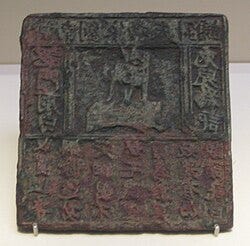
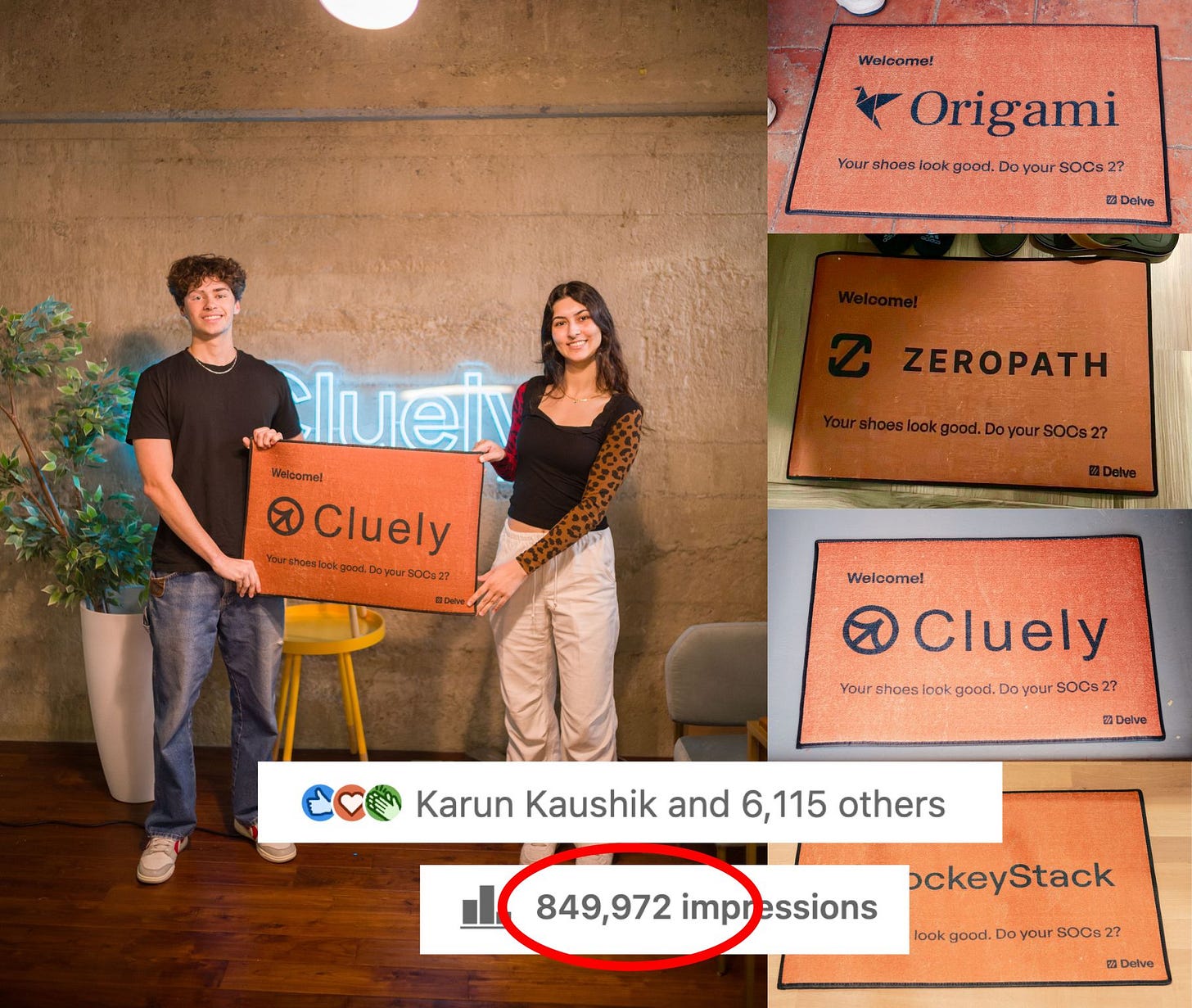
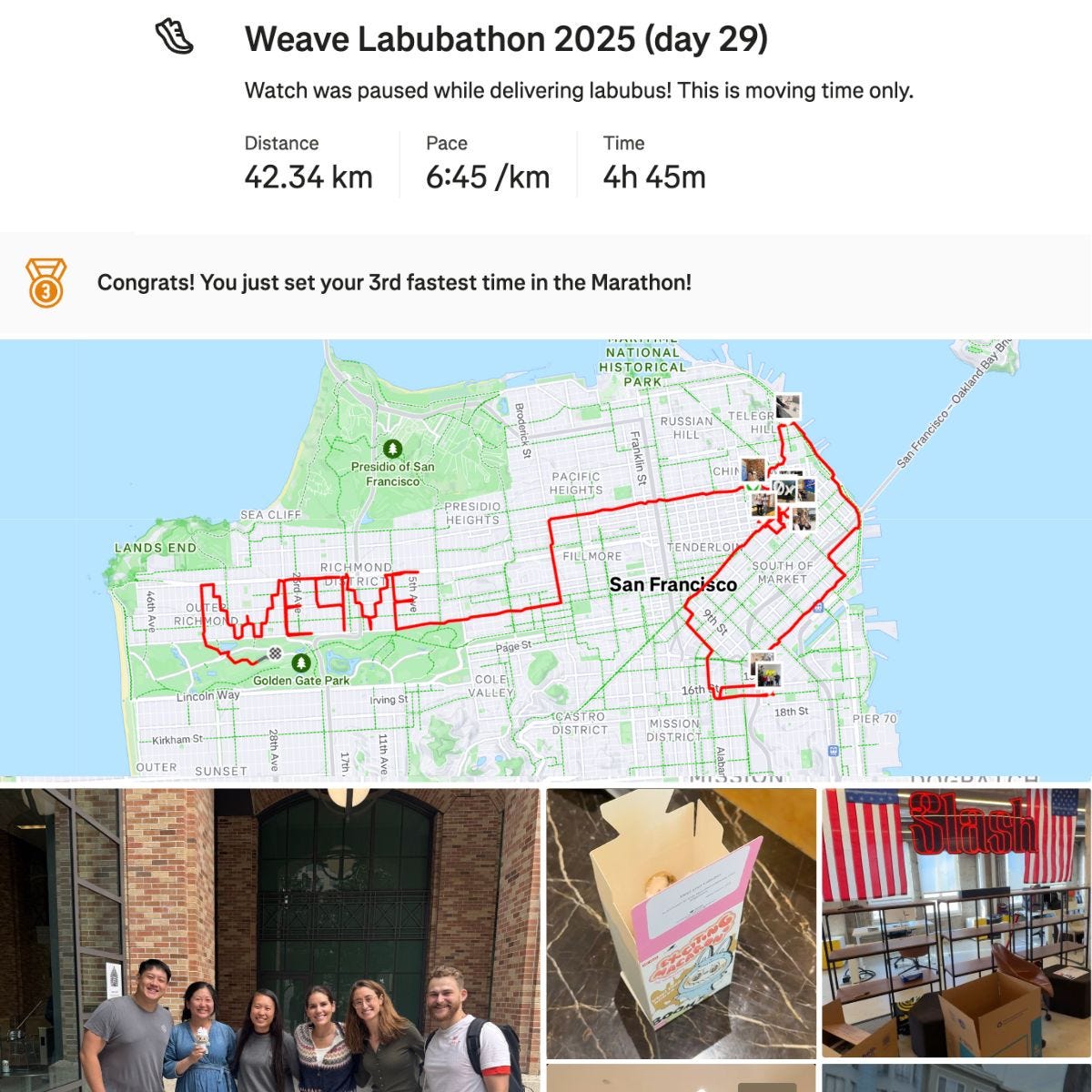
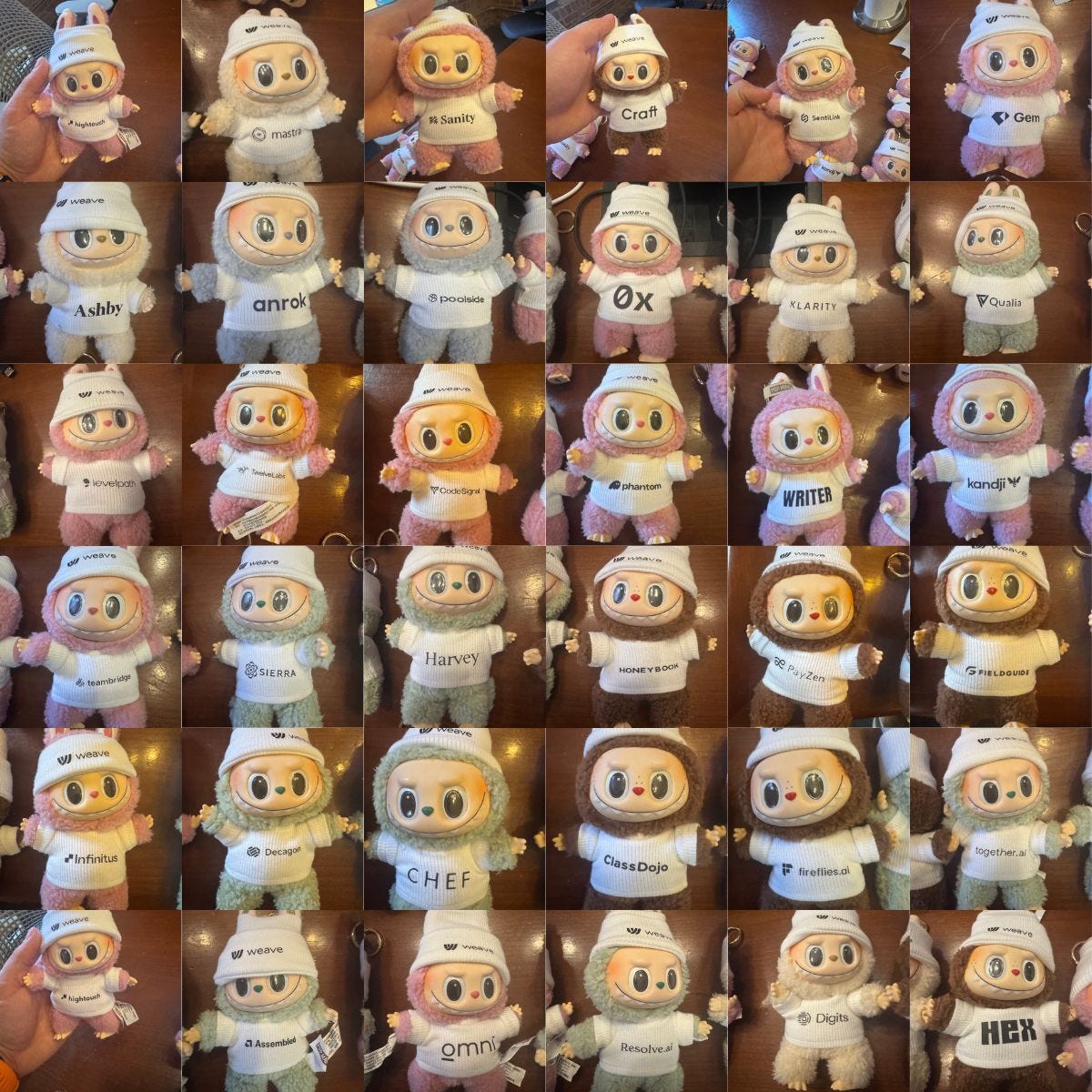

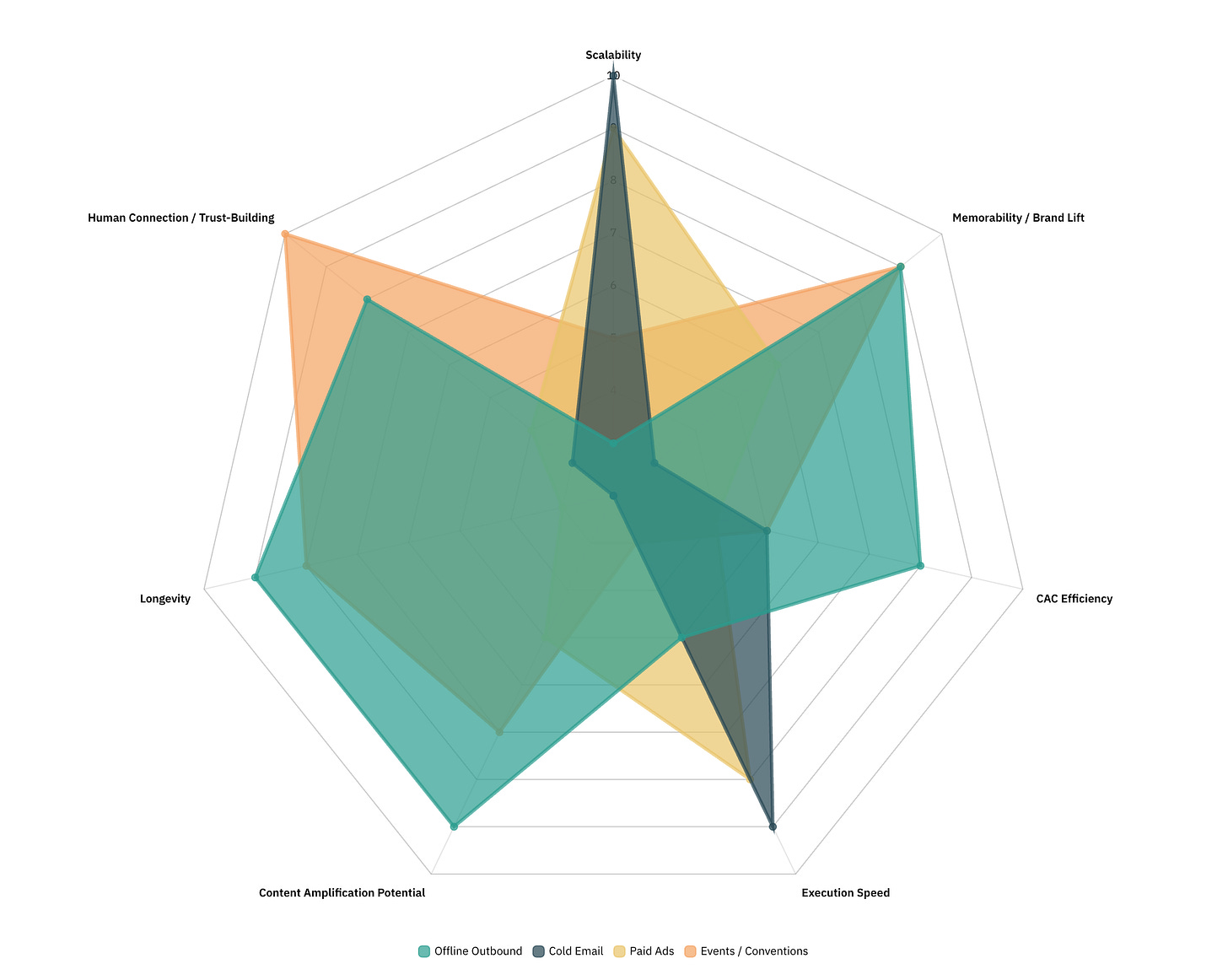
When are the gummy bears dropping?